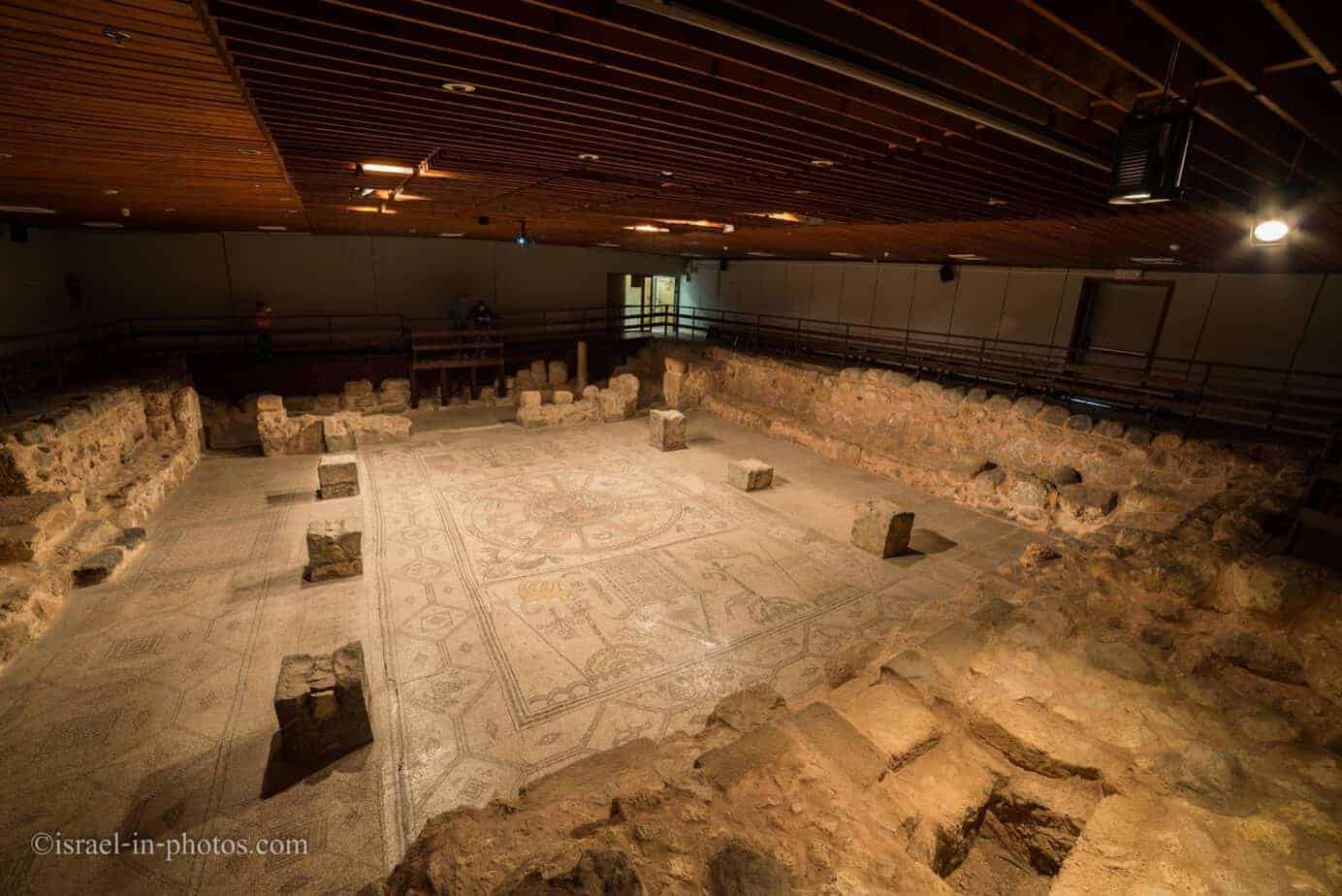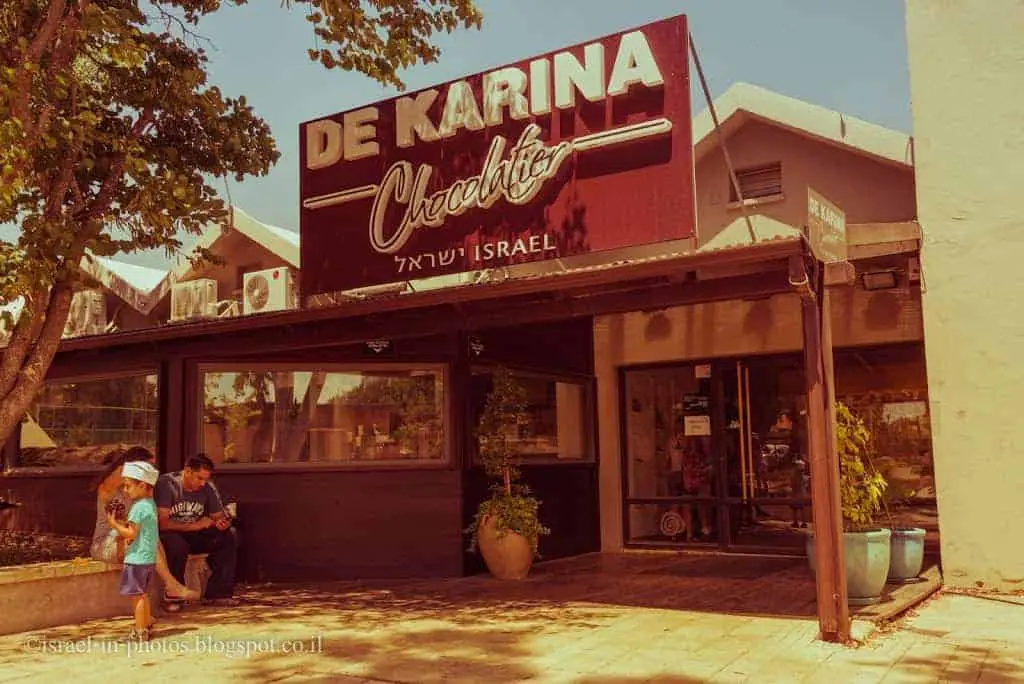Beit Alfa Synagogue National Park – Stunning Ancient Mosaic
Beit Alfa Synagogue National Park, located at kibbutz Beit Alfa, features one of the most beautiful and well-preserved mosaics in Israel.
Note: if you love mosaics, see Mosaics in Israel – 15+ Places Where You Can See and 20+ Photos.
Table of Contents
Map
Beit Alfa Synagogue is located in Kibbutz Beit Alfa, not far from Beit Shean National Park.
Directions for drivers: Link to Waze and Link to Google Maps
Directions for public transport: Link to Moovit
Interactive map of the area:
Opening Hours
Sunday – Thursday and Saturday: 8:00 – 17:00 (16:00 in winter).
Friday: 8:00 – 16:00 (15:00 in winter).
On holiday eves, usually 8:00 – 13:00.
Note: Since the pandemic, the Israel Nature and Parks Authority has started limiting the number of people in each park. Thus, reservations are recommended through the official site (you can find the link below).
Entrance Fee
Adult 24 NIS, child 10 NIS, and student 20 NIS. Free for National Parks annual subscribers.
If you visit multiple National Parks, consider purchasing a combo ticket. Additional information is available at National Parks and Nature Reserves.
Note: opening hours and ticket prices were updated in October 2022. In any case, recheck the official site before visiting.
Background Info
Beit Alfa Synagogue was founded at the end of the fifth century CE. It consists of a courtyard, a corridor, a rectangular main hall featuring a spectacular mosaic floor, a second-story balcony, and an additional room.
The main attraction is the mosaic, and since it is in a roofed, air-conditioned building, you can visit it all year round. Also, considering it is a small site (the visit duration is about 30 minutes), I recommend combining it with other nearby attractions (you can use the interactive map at the beginning of this article to search for attractions).
The Beit Alfa Synagogue was uncovered in 1928 by members of the nearby Kibbutz Hefzibah. Who stumbled upon the synagogue’s large mosaic floors during the construction of a new irrigation system. Excavations began in 1929 under the auspices of the Hebrew University of Jerusalem and were led by an Israeli archaeologist, Eleazar Sukenik. Secondary round of excavations, sponsored by the Israel Antiquities Authority in 1962, further explored the residential structures surrounding the synagogue.
Also, a hoard of 36 Byzantine coins was found in a shallow depression in the floor apse.
Note: all quotes were taken from the official site.
Beit Alfa Synagogue
Upon entering Beit Alfa Synagogue, a guide will offer a 12-minute audiovisual presentation. You can ask for the one in Hebrew or English.
Here I stand on the balcony, and the white screen for the audiovisual presentation rolls down:
The Mosaic
View of the mosaic from the side:
The colorful tile in the main hall is divided into three panels. They depict the Ark of the Covenant (right), the zodiac (center), and the offering of Isaac (left).
And here is a view from the other side:
You can see the closest mosaic panel – the Synagogue Scene.
The southern panel, which laid before the synagogue’s Torah Shrine, is a liturgically oriented scene that emphasizes the centrality of the Torah Shrine. The Torah Shrine stands at the center of the composition and is depicted with a gabled roof. The Torah Shrine is decorated with ornamented panels featuring diamonds and squares. The floating conch shell seen in the center of the roof is a stylized representation of the Torah Shrine’s inset arch. A hanging lamp is suspended from the gable of the roof. As a symbolic marker of its importance, the lower register of the Torah Shrine is flanked by two roaring lions and is surrounded by Jewish ritual objects such as the Lulav, Etrog, Shofar, and incense shovel. Two birds flank the gabled roof in the upper register of the Torah Shrine.
Offering Of Isaac Mosaic
Close-up of the offering of Isaac panel:
Just below the offering of Isaac, you can see an Aramaic mosaic inscription (initially at the entrance to the synagogue), which reveals that the floor was laid during the reign of Justinian (apparently Emperor Justinian I, 518-527 CE ). The other inscription, in Greek, mentions the mosaic’s artists: Marianus and his son Hanina (who were also listed as the artisans of the nearby Beth Shean synagogue). The inscriptions are flanked by a lion and a buffalo, who serve as the synagogue’s symbolic guardians.
Above the Dedicatory Inscriptions, you can see the “Binding of Isaac” (Genesis 22: 1-18).
To the right, Abraham is depicted dangling Isaac over the fiery altar as he raises his hand to perform the sacrifice. In the center, God, symbolized by the small fire- encircled hand appearing in the upper center, instructs Abraham to sacrifice a nearby ram instead of Isaac. The hand of God is aptly labeled with “al tishlah” or “do not raise,” taken from God’s command to the angel that Abraham not “raise his hand against the boy [Isaac]” (Genesis 22:12). In the lower center of the composition, immediately below the hand of God, the ram that served as Isaac’s substitute is positioned standing sideways, trapped in the nearby thicket. The odd positioning of the ram may perhaps be a convention the artists used to convey the distance that the Bible says separated Abraham and Isaac, from the two servant boys (Genesis 22:5), who accompanied Abraham and Isaac on their journey, and are depicted standing to the left. All the figures in the scene, except for the two servants, are identified with Hebrew labels.
The Zodiac Wheel Mosaic
Close-up of the Central Panel, the Zodiac Wheel:
The central panel features a Jewish adaptation of the Greco-Roman zodiac. The zodiac consists of two concentric circles. With the twelve zodiac signs appearing in the outer circle, and Helios, the Greco-Roman sun god, appearing in the inner circle. The outer circle consists of twelve panels, each of which corresponds to one of the twelve months of the year and contain the appropriate Greco-Roman zodiac sign. Female busts symbolizing the four seasons appear in the four corners immediately outside the zodiac. In the center, Helios appears with his signature Greco-Roman iconographic elements such as the fiery crown of rays adorning his head and the highly stylized quadriga or four-horse-drawn chariot. The background is decorated with a crescent-shaped moon and stars. As in the “Binding of Isaac” panel, the zodiac symbols and seasonal busts are labeled with their corresponding Hebrew names.
This zodiac wheel, along with other similar examples found in contemporaneous synagogues throughout Israel such as Naaran, Susiya, Hamat Tiberias, Huseifa, and Sepphoris, rests at the center of a scholarly debate regarding the relationship between Judaism and general Greco-Roman culture in late antiquity. Some interpret the popularity that the zodiac maintains within synagogue floors as evidence for its Judaization and adaptation into the Jewish calendar and liturgy. Others see it as representing the existence of a “non-Rabbinic” or a mystical and Hellenized form of Judaism that embraced the astral religion of Greco-Roman culture.
The Zodiac Wheel panel reminds me of the Bible Lands Museum in Jerusalem. One of the main ideas in this museum is that people are influenced by their neighbors. And the Zodiac Wheel is an example of cultural influence.
Note: if you love zodiac mosaics, check out Hamat Tiberias National Park.
Summary
In conclusion, Beit Alfa Synagogue has one of Israel’s best-preserved and most beautiful mosaics. The duration of a visit is relatively short, around half an hour. Thus, I would suggest combining it with other attractions in the area, such as Beit Shean National Park (refer to the map at the top of this article).
Have you ever visited Beit Alfa Synagogue National Park? Tell us about your experience in the comments below.
I hope you enjoyed the Beit Alfa Synagogue, and I look forward to seeing you on future travels.
Stay Tuned!
Additional Resources
Here are several resources that I created to help travelers:- Trip Planner with Attractions and Itineraries is the page that will help you create your perfect travel route.
- What is the Best Time to visit Israel? To answer this question, we will consider the weather, prices, holidays, festivals, and more.
- Information and Tips for Tourists to Israel will answer the most common questions tourists have about Israel (including safety, passports, weather, currency, tipping, electricity, and much more).
- Israel National Parks and Nature Reserves include a complete list, top ten, map, tickets (Israel Pass, Matmon, combo), and campsites.
- If you are looking for things to do, here are the pages for Jerusalem, Tel Aviv, Haifa, Sea Of Galilee, Akko (Acre), Eilat, Nazareth, Safed (Tzfat), and Makhtesh Ramon.












